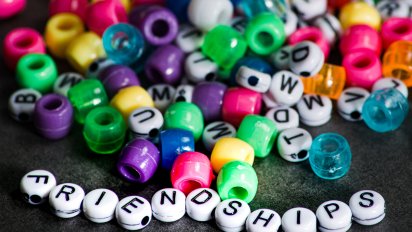The Latest
Picture this: Your supporters wake up, and it’s February 2nd. Again. And again. And again. Like a never-ending loop of the same day, just a nonprofit donor journey that’s stuck in a repetitive cycle.
While it’s tempting to stick to the easy and familiar like Bill Murray reliving the same day in Groundhog Day, your donors shouldn’t be experiencing déjà vu when they engage with your nonprofit.
If you’re caught in a loop and find yourself repeating the same tactics without progress, fear not! We’re here to help you break free from the Groundhog Day phenomenon and shake up your donor engagement strategy.
First, it’s important to assess your current donor engagement strategy by asking yourself these three questions.
- Are you stuck in a rut? Just like Bill Murray’s character, Phil Connors, it’s important to recognize the signs of being stuck. Are your emails going to the same tired list? Is your social media content becoming predictable? Identifying the rut is the first step to breaking free.
- Are you testing? Trying out new ideas helps you see what resonates with donors. This could be strategic A/B tests on your email campaigns, experiments with messaging, or even different communication channels. Embracing experimentation is essential to breaking out of the cycle.
- Are you utilizing your data? Unlike Punxsutawney Phil’s weather predictions, anticipating donor behavior shouldn’t be left to chance. Are you diving into your data to understand your donors’ motivations, behaviors, and patterns? Your data is the key to unlocking what works… and what doesn’t.
Next, it’s important to look at your donor journey. Just as Phil Connors had to figure out the perfect sequence of events to break the cycle, you need a strategic plan for donor engagement. You should have a detailed roadmap that identifies touchpoints and plots out the ideal path donors should take, from new to loyal donor.
Here’s a 12-step guide to create real engagement with new donors.
WEEKS 1-2: ACKNOWLEDGEMENT & WELCOME
- Thank you page: Make your Thank You Page a true welcome to your mission. Since real estate on this page is unlimited, consider adding a thank you message in video form along with links to other opportunities for engagement such as your social channels.
- Immediate acknowledgment: An online donation deserves more than just a receipt. Make sure you send an immediate thank you email or letter within 48 hours of receiving the donation that communicates how your work is powered by passionate donors “like you.”
- Welcome packet: Mail a worthwhile welcome packet that includes information about your organization, its impact, and a personal welcome letter from your Executive Director (or a mission beneficiary!). And since what you’re really doing is trying to create cause advocates, include a small freebie the donor can use to show their connection (think koozies, reusable straws, stickers, etc.).
WEEKS 3-4: PERSONAL ENGAGEMENT
- Phone call: Make a personal phone call to thank your new supporter and ask about their interests in your cause. If this poses a challenge with keeping up with incoming donors, consider setting a rule around the donation amount that qualifies for this activity.
- Invitation to connect: Encourage your new donors to follow your organization on social media or sign up for your newsletter for regular updates. Add a timely reference to your outreach to show the dynamic nature of those platforms.
WEEKS 5-8: EDUCATION AND INVOLVEMENT
- Educational materials: Send them educational materials about the specific projects or programs their donation is supporting. And if possible, always include an impact story.
- Special offerings: Invite them to any upcoming events or webinars that give deeper insight into your work. You can also create special offers that incentivize donors to further their impact.
- Additional ask: Add a small ask along with information about your sustainer program. This should cover all the benefits to both the donor and beneficiaries of your services.
WEEKS 9-12: ENGAGEMENT AND FEEDBACK
- Engagement opportunities: Inform them about volunteer opportunities or other ways they can get involved. Moreover, give them the resources to amplify their involvement and activate other like-minded people.
- Feedback survey: Send a feedback survey to better understand their motivations, interests, and expectations. This doesn’t have to be long, but it should hit on key questions that will help you enhance your donor engagement strategy and create a feeling of mission ownership with your supporters.
THROUGHOUT THE 12 WEEKS: ONGOING COMMUNICATION
- Regular updates: Include donors in your regular mailing list for updates, success stories, and ongoing needs. And go a step further by asking them to reply and share something such as why they chose to donate to your organization.
- Impact reports and next steps: After 90 days, send a report showing the impact of their donation. Additionally, let your donors know what to expect going forward.
Mapping out or refreshing your donor journey is no small feat. But remember, donors are not one-time patrons; they are potential long-term champions of your mission who deserve to feel valued, appreciated, and satisfied.
Similar to Phil Connors, you won’t break the Groundhog Day donor cycle by doing the same thing repeatedly. Embracing change—even the small stuff—can make all the difference in keeping things fresh and optimizing your donor journey.
And your nonprofit CAN create a fresh start for donor engagement by welcoming in a new era of creativity, experimentation, and meaningful connections. Your donors will thank you, and you won’t be stuck in the same old routine.
Looking for more information?
For more information about reinvigorating your donor engagement strategy, contact us at info@thelukenscompany.com.





